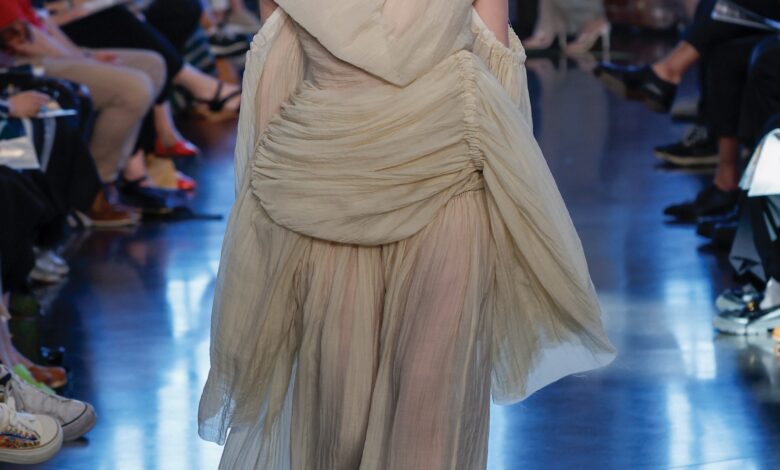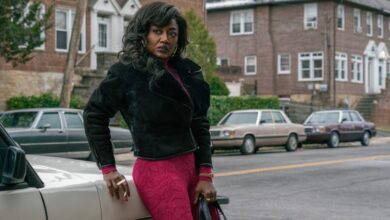Rhode Island School of Design Fall 2024 Ready-to-Wear

“There wasn’t a theme for senior students to respond to; it is all about their individual voices.” So said Gwen van den Eijnde, associate professor and apparel design department head at RISD, about the class of 2024’s final projects. Freedoms aside, a good number of the students’ thesis statements revealed they are both sensitive to the chaos in the world and resistant to authority. Gene Suh thrives on disorder; his deconstructed work retains a kinetic energy. Abandoning restraint, Hasti Hosseini crafts ivory knits that reveal the body, while Ace Yin looks back at her conservative religious upbringing through a soft-focus lens in an attempt to turn grief to joy in order. “A crucifix blurred is a star,” she writes.
The line between “the monastic and masochistic” is the preoccupation of Abraham Hsu, who titled his all-black collection cults cults cults. The restraint of his soft shadowy dress was contrasted by the surprise wantonness of another number that, when the model turned, revealed her back and backside through belt straps. Glory Lee’s gentle exploration of corporate garb, meanwhile, is more SFW.
Anya Norstrom leans into the glitch, via clothes designed with the aid of technology that nonetheless retain a sense of hand, especially a crushed dress in bright pink. Like Nordstrom, Sue Sima uses the CLO program, which enables 3D design. Her own pole dancing informs an armor-inspired collection with futuristic touches. In the sci-fi story Sofia Zhuk-Vasilyeva constructed, the beetles are revolutionaries and a force of good in a world gone mad. The moral might be that humor can temper dystopia.
Humans, rather than insect characters, and the subject of uniforms, fuel the narratives of Fiona Frohnapfel and Kailin Hartley. The former imagines her protagonists inhabiting a seaside town. Their not-quite-what-they-seem clothes, including a draped and topstitched striped shirtdress or sweater with attached scarf, are proposals that add personality to a wardrobe. Hartley’s collection is built around a self-written film script. A group of green-striped ’60s-style A-line dresses spell out “please me”; others feature scenes from the Swedish erotic film; I am Curious (Yellow).
Henry Hawk’s thesis is built around denim, a universal uniform. Focusing on what he calls the “1880s-1900s Patent Era,” and working with a pattern book from that time, Hawks uses upcycled denim, as well as painter’s drop cloths as his materials, and creates his pieces using 100-year-old Singer sewing machines. Reviving and reinterpreting details from the past, Hawk’s aim is to strike an “elegant balance between adornment and functionality.” Look for him to explore that theme further as a participant in the Supima Design Competition.
Yiyi Wan’s Funeral Poem II collection includes a hooded and draped “shroud” dress with cloud-like quality and a “fur” jacket and shoes made of shredded linen, but the pièce de résistance is a veiled gown with an apron-like construction over a pleated skirt accessorized with a black rose. As easy on the eyes as her clothes are, they are also purposeful. In her artist’s statement Wan, who recently lost her grandfather, explains that “death remains a taboo subject” in the Chinese cultural tradition in which she was raised. In exploring her own grief, she wants to use her creative work as a means of offering solace and catharsis to others in mourning.
The belief that creativity can change the world is a beautiful sentiment, one shared by all the students. Ethan Hoskins discovered in the course of his apparel design studies that he wanted to pursue painting. His abstract expressionist self-portraits, executed on Styrofoam, explore his chosen themes of “ visibility, value, transformation, and identity.” The paintings are a reminder of the importance of following one’s heart.



